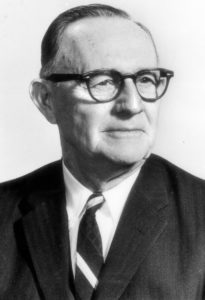How Long Must We Wait?
College basketball adopted the three-point shot in 1986 and more than 30 years later most sports reporters still don’t report a team’s effective shooting percentage. They still treat a two-point shot and a three-point shot as if they had the same value and, as anyone can see, that’s not so.
To combine two-point and three-point hits and misses without taking into account the fact that a made three-point shot is 50 percent more valuable than a made two-point shot is misleading.
And do you know why they don’t report the effective rate? Here’s what I think: newspaper reporters –and I was one – are, by and large, not very good at math.
This is the formula: [two-point FGM + 1.5 times three-point FGM] divided by total field goals attempted = effective shooting percentage. A team that hits, say, 22 of 49 two-point attempts and 7 of 10 three-pointers would have a shooting percentage of 49.2 percent but an effective shooting percentage of 55.1 percent.
Time To Move On
Aren’t you tired of hearing sports commentators on radio and TV say, breathlessly, “There are so many story lines to this game!”
I thought “story line” would have run its course by now, and joined “pay dirt” and “gridiron” in the waste basket of trite expressions.
But “story line” has taken on a life of its own — that’s a little joke in case you’re wondering.
Fraction Friction
And when are news men and woman going to stop saying “fraction” when they mean “small?”
Example: The New York Times reported on Dec. 21, 2018: “The campaign has a goal of raising $1 billion, a fraction of what would be need to construct a barrier between the United States and Mexico.”
Don’t they know that some fractions, called improper fractions, can be quite large, infinitely large, while others, called proper fractions, can be quite small, infinitely small: 1/1,000,000 is a fraction. So is 1,000,000/1.
If they insist on saying “fraction,” meaning small, they should at least say “small fraction.” Or they could do us all a favor and just say “small.”
And That’s Not All
And when or when will pundits, and newsmen and women, too, stop telling us another public figure has “double downed” on something or other, or that almost everything has been “weaponized,” or soon will be.
Here is a partial list, from Slate.Com, of things that have been “weaponized,” we’re told: anthropology, architecture, black suffering, facts, femininity, flatulence, ideology, kale salads, marketing, religion, sadness, secularism, texting, traditional form of dress, virtue, and women.
Five things To Know
Seems like I see that phrase all that time now in sports stories [“Kentucky takes down #1 Tennessee: 5 things to know…”] and in news summaries. I Googled “Five Things To Know” — see what I’m talking about?
Aren’t there six, or eight, points that should be mentioned sometimes? Or maybe only three on four. Why does it have to be five? Have many of my friends in the news business adopted formula reporting, stretching some points and condensing others so they can tell us about “five things?”
Common sense tells you that’s exactly what they are doing.
NOTE: You may have notice that there are five items in this post. Purely coincidental. Really.
Coming Friday: We Weren’t Poor, Just Broke

